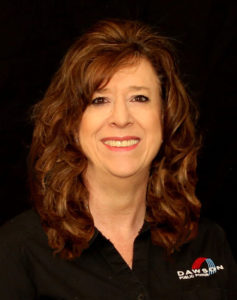
Gwen Kautz, Dawson Public Power District General Manager
By Gwen Kautz, Dawson PPD General Manager
gkautz (at) dawsonpower.com
308-324-2386
Over the holidays, a report was published that claimed Nebraskan’s are not benefiting from the public power model in Nebraska and that introducing competition would garner lower rates. The report had a combination of factual and questionable data.
I’d like to remind our readers that currently, Nebraska is one of the lower-cost electricity providers in the United States. More than three quarters of the United States has higher electric rates. Public power districts are also not-for-profit companies.
Competition dilutes the foundational and fundamental benefits of local control and service.

Source: American Public Power Association report: Retail Electric Rates in Deregulated and Regulated States: 2015 Update. April 2016.
In 2015, the American Public Power Association put out a report that shows deregulation (retail choice) did not reduce electric rates for any of the states that went that direction. Eight states in line to adopt retail choice have since rescinded or suspended that option. Of the 17 states (California, Connecticut, District of Columbia, Delaware, Illinois, Massachusetts, Maryland, Maine, Michigan, Montana, New Hampshire, New Jersey, New York, Ohio, Pennsylvania, Rhode Island and Texas) using retail competition, only the large industrial customers have reaped great savings. In fact, they all have higher residential rates than Nebraska with the average kilowatt hour rate being 15.38¢. Using the same EIA.gov data, Nebraska’s average residential kWh rate is 10.8¢ cents as of October 2016.
When you hear that another power company can save you 10-15 percent on your electric bill, remember that it only applies to the cost of a kWh. It would not include any of the distribution charges or transmission costs. Look at the fine print, is it a long-term promise or simply an “introductory sales pitch.” If those 17 states’ residential customers weren’t able to find lower cost power, how will you?
The report implies that those of us running public power districts in the state are not doing so in the best interest of the consumer. Since public power districts are overseen by boards of directors elected locally, our directors are held accountable by you. At any point in time, you are able to reach out to a director and speak to them personally. During the election process, you can change your director if he or she is not representing their constituency properly. Do you think a large private company will be available like that? Will an out-of-state power provider listen to you?
Who do you think will win if retail choice is adopted? Likely only a “for profit” company would benefit. If your neighbor decides to choose a different supplier and you stay with public power, eventually things get muddy. Public power districts may have to spread their costs over fewer customers. Those who chose alternative, out-of-state providers will find themselves lost when it comes to who to call and for what. The poles and wires won’t change, but as the utility that must maintain those lines, we are still entitled to collect a distribution charge to cover the maintenance and upkeep. Add that to your “new” kWh price and see how much you’ve saved. New policies may need to be crafted to prioritize service calls and restoration efforts.
We believe public power is a GREAT thing for the people of Nebraska. We hope you believe that, too. Please contact me if you have questions.
Sources:
EIA Average Residential Rates – Table 5.6A. Average Price of Electricity to Ultimate Customers by End-Use Sector. October 2016.
EIA “State electric retail choice programs are popular with commercial and industrial customers.” May 2012.
American Public Power Association report: Retail Electric Rates in Deregulated and Regulated States: 2015 Update. April 2016.
February 2017
